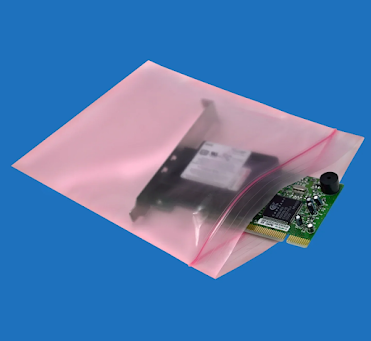Safeguarding Sensitive Electronics: Unveiling the Power of Anti-Static Bags
In the fast-paced world of technology, where electronic components are becoming increasingly delicate and susceptible to damage from static electricity, the importance of protective measures cannot be overstated. One such crucial element in the realm of electronic component protection is the use of anti-static bags.
Understanding the Threat: Static Electricity
Before delving into the specifics of anti-static bags, it's essential to grasp the menace that static electricity poses to electronic components. As electronic devices continue to shrink in size and increase in complexity, they become more vulnerable to damage caused by static discharges. Static electricity, generated by various sources such as friction, can build up on surfaces and discharge when in contact with sensitive electronic components. This discharge can lead to irreversible damage, affecting the performance and longevity of electronic devices.
Enter Anti-Static Bags: The Unsung Heroes of Electronics Protection
Anti-static bags, also known as electrostatic discharge (ESD) bags, play a pivotal role in mitigating the risks associated with static electricity. These specialized bags are designed with a unique blend of materials that prevent the build-up and discharge of static electricity, creating a protective shield around the enclosed electronic components.
The primary material used in the construction of anti static bags is a dissipative polyethylene, a substance engineered to safely dissipate any static charge that may accumulate on the surface of the bag. This feature ensures that the enclosed electronic components remain shielded from the harmful effects of static electricity throughout storage, transportation, and handling.
The Anatomy of Anti-Static Bags: How They Work
Anti-static bags operate on a simple yet effective principle. The dissipative polyethylene material used in their construction allows any static charge to move freely across the surface and safely dissipate into the surrounding environment. This prevents the charge from concentrating in one area and, subsequently, from discharging onto the sensitive electronic components enclosed within.
Furthermore, anti-static bags often feature a distinctive metallic layer, providing an additional layer of protection. This metallic layer acts as a Faraday cage, redirecting any external static charges away from the enclosed components, further enhancing the bag's protective capabilities.
Applications Across Industries
The applications of anti-static bags extend across various industries where sensitive electronic components are omnipresent. From the manufacturing of semiconductors to the transportation of delicate circuit boards, anti-static bags are a staple in ensuring the integrity of electronic devices.
In the manufacturing sector, where precision is paramount, anti-static bags are used to store and transport semiconductor wafers, microchips, and other delicate electronic components. The bags protect these components from static discharges that could result in defects, malfunctions, or reduced performance.
In the field of consumer electronics, anti-static bags are utilized for packaging items such as computer components, hard drives, and memory modules. Ensuring that these products reach consumers in pristine condition is not only a matter of customer satisfaction but also a crucial step in preventing potential returns and warranty claims.
Choosing the Right Anti-Static Bag
Selecting the appropriate anti-static bag for a specific application is critical to maximizing its protective capabilities. Factors such as the type of electronic component, its sensitivity to static electricity, and the duration of storage or transportation should all be considered when choosing the right anti-static bag.
It's important to note that anti-static bags come in various shapes and sizes to accommodate different electronic components. Some bags are designed with resealable closures, allowing for easy access while maintaining a protective environment. Others may feature extra layers of cushioning to protect against physical damage in addition to static discharge.
In the ever-evolving landscape of electronic technology, the importance of safeguarding sensitive components from static electricity cannot be overstated. Anti-static bags stand as a reliable and cost-effective solution to this pervasive threat. Investing in high-quality anti-static bags is a small but crucial step that can have a significant impact on the reliability, performance, and lifespan of electronic devices.
By understanding the role of anti-static bags and incorporating them into the handling, storage, and transportation of electronic components, industries can ensure the continued advancement of technology without compromising on the integrity of their products. In the grand scheme of electronic protection, these unassuming bags play a vital role, quietly shielding our electronic advancements from the invisible menace of static electricity.



.png)
Comments
Post a Comment